Oldest working Catholic convent in York opens exhibition centre
- Published
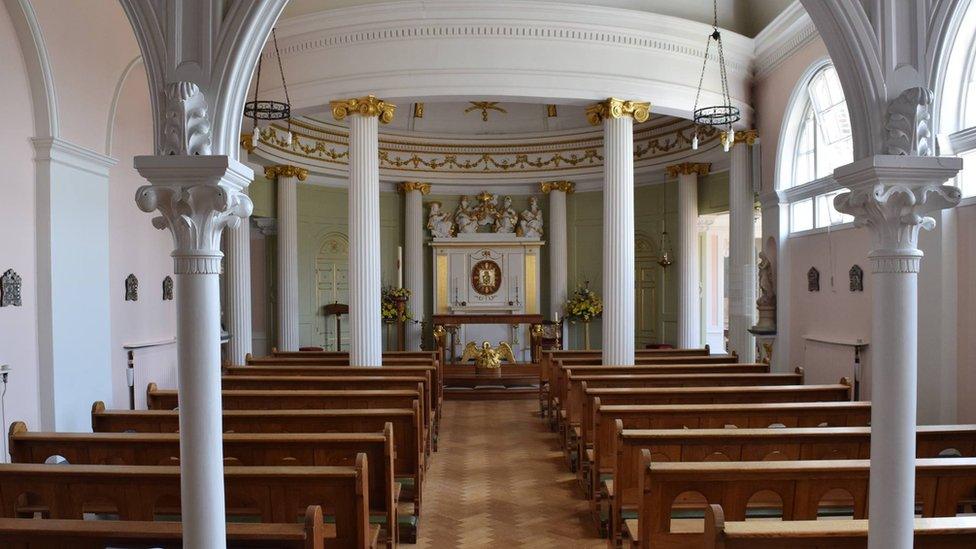
The convent's chapel, built in the 18th Century, has eight doors in and out because being a Catholic at the time was illegal and the sisters wanted ways to escape if magistrates came to arrest them
England's oldest working Catholic convent is opening an exhibition centre charting its history from secret beginnings more than 300 years ago.
The Bar Convent in York was founded in 1686, a time when Catholic convents were prohibited by the state.
Over the years it has been a boarding school, housed Bosnian refugees and survived bombing by the Luftwaffe.
It is still home to the same religious order, the Congregation of Jesus, and is also run as a guest house.
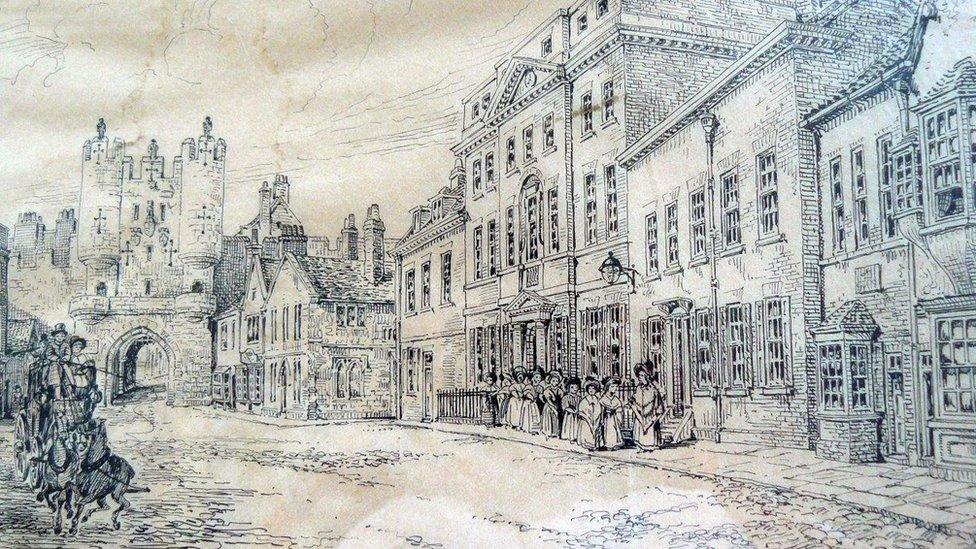
Sir Thomas Gascoigne, a local Catholic landowner, gave £450 for Mother Frances Bedingfield to come to York with a group of nuns and buy the 17th Century house, just outside Micklegate Bar
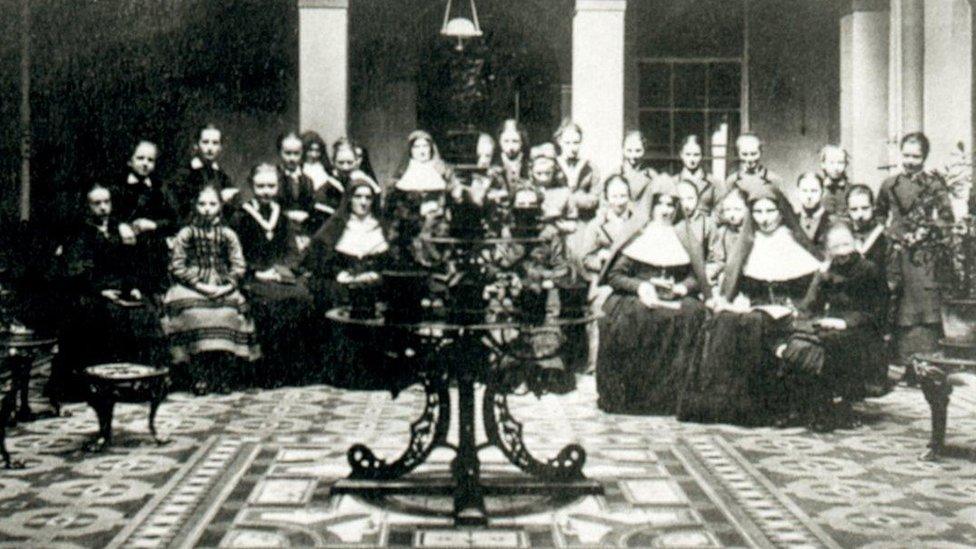
The convent was established after the death of Mary Ward, who fought throughout her life to set up schools to teach Catholic girls
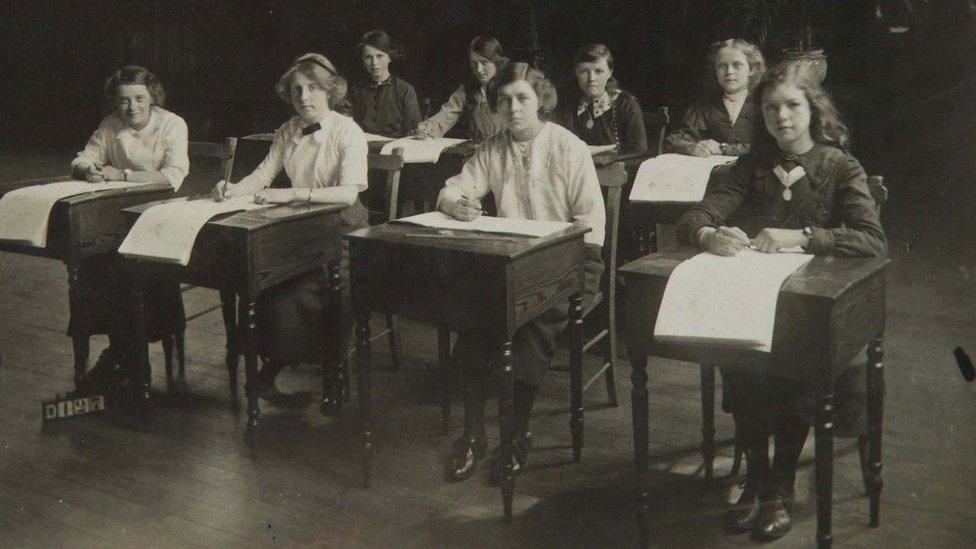
The convent began life as a boarding school before becoming a free day school
Located on Blossom Street, the convent was founded by Mother Frances Bedingfield as a legacy to Mary Ward, a radical Yorkshire woman who fought throughout her life to establish schools across Europe for Catholic girls.
When she died in York in 1645, her companions continued her work, establishing the convent as a boarding school.
It was then illegal to practice the Roman Catholic faith. Institutional anti-Catholicism in England had its origins in The Reformation under King Henry VIII, who, in 1534 declared the English crown to be "the only supreme head on earth of the Church in England" in place of the Pope.
The centre charts the convent's history
Laws making it a legal obligation to worship in the Anglican faith were later introduced under the reign of Elizabeth I.
As a result, the Bar Convent was set up as a secret community, where the sisters lived discreetly and hid their true purpose.
The convent's design reflects the attitudes towards practising Catholics at the time, with the chapel being built in the centre of the property, hidden from street view so the nuns could worship safely.
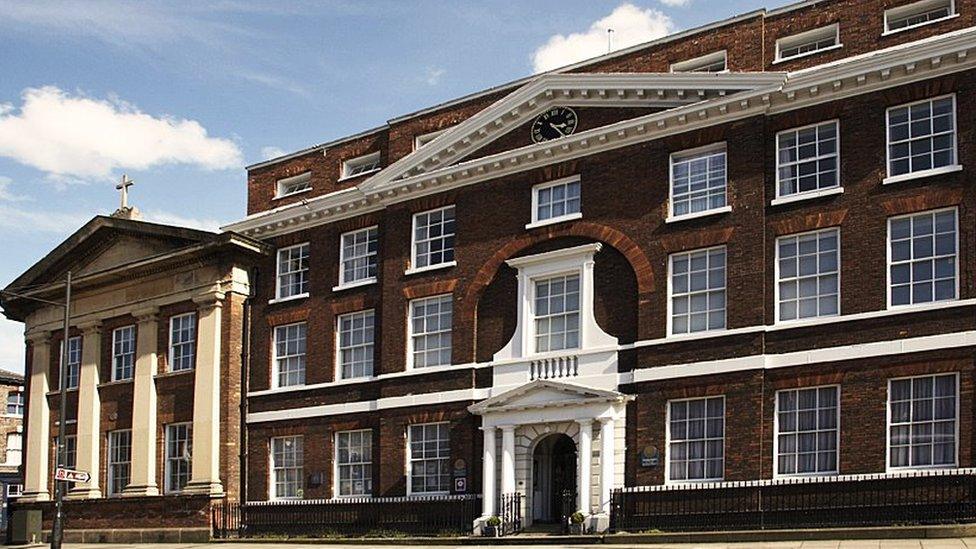
Between 1760 and 1790, the original house was demolished and replaced with the current Georgian Grade-1 listed house
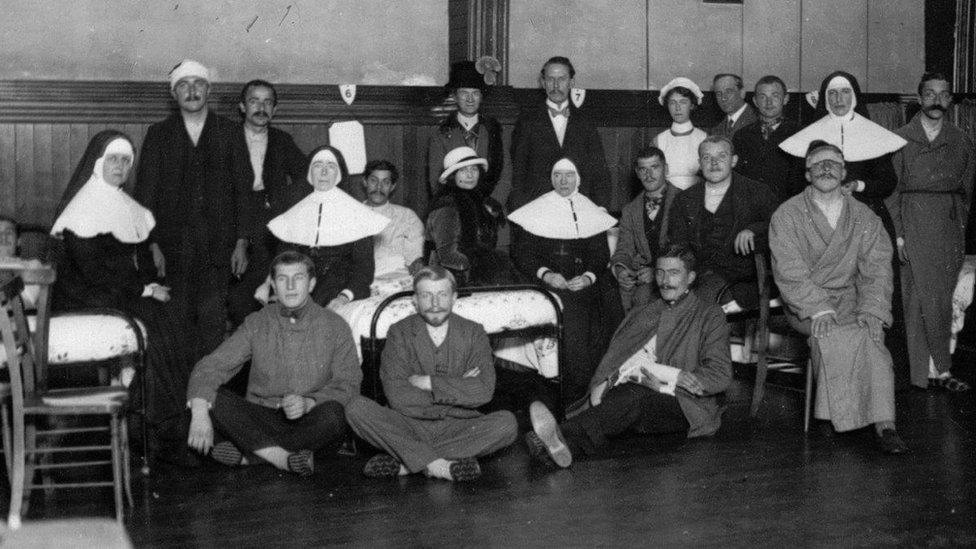
Wounded soldiers were treated in the building's concert hall during World War I
During World War I, Belgian nuns and refugee children were given a home there and the concert hall was converted into a hospital ward for wounded soldiers.
The building survived bombing during the Second World War but five of the sisters were killed.
The nuns continued to run a school on the site until 1985 when it was transferred to the Diocese of Middlesbrough and afterwards, as a way of making use of the empty rooms, a guest house was introduced.
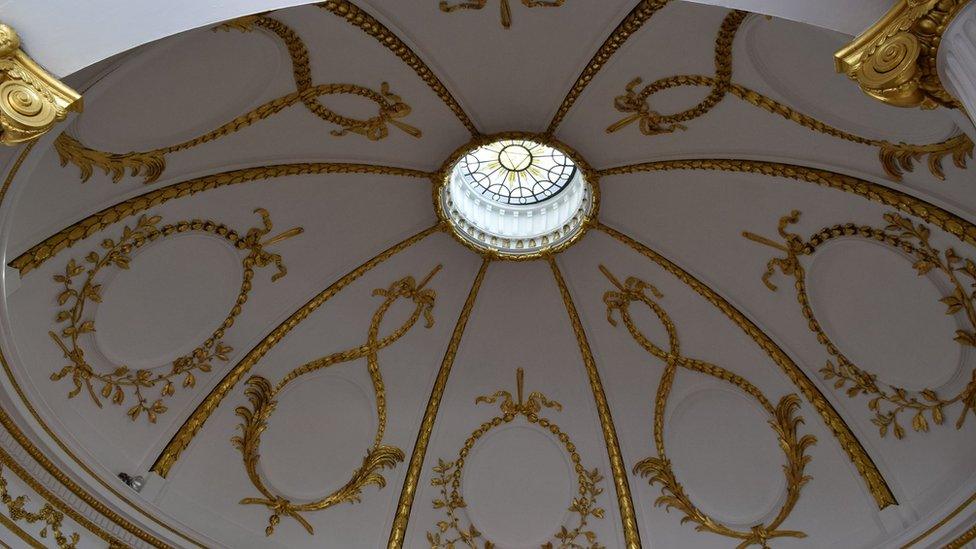
The chapel's dome is completely invisible from outside, reflecting attitudes towards practicing Catholics at the time it was built
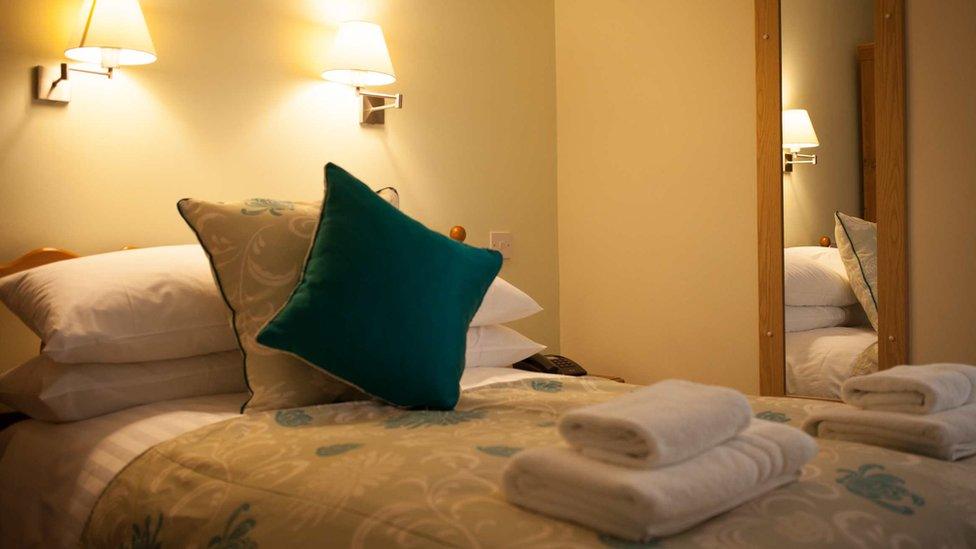
The Bar Convent Trust run the building as a working convent as well as an exhibition, shop, cafe and guest house for the public
The new exhibition centre, set over two floors, is part of a £2m redevelopment of the convent, which includes improved visitor facilities and upgrades to the 20 bedrooms.
Money for the project has been raised through donations from trusts, organisations, individuals and the Congregation of Jesus in the UK and worldwide.